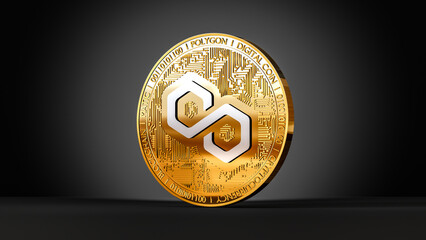MATIC, integral to Ethereum’s primary scalability framework, is set to unveil the Etrog mainnet update on February 6. This significant upgrade will elevate Polygon’s blockchain to a second-generation zk-EVM status, facilitating a seamless transition for developers to migrate their projects directly onto the network, mirroring their operations on Ethereum without necessitating any adjustments.
Etrog Mainnet
Polygon aims to evolve its zk-EVM network into a more advanced Type 2 zk-EVM through this upgrade. This enhancement will streamline the deployment process for developers on Polygon’s platform, thereby attracting additional protocols to its ecosystem and enhancing its overall functionality.
Developers will have the convenience of transferring their Ethereum-based code directly onto the Polygon blockchain without any modifications. This breakthrough is scheduled to go live on February 6. As the launch date approaches, the price of MATIC has observed a modest increase of 1% on the day.
Positive On-Chain Indicators for MATIC’s Future
From January 19 to February 4, there has been a noticeable decline in the amount of MATIC held on exchanges, as reported by Santiment. Typically, a decrease in exchange-held supply can lead to a reduction in selling pressure, potentially resulting in a price rebound.
Additionally, there has been a reduction in large MATIC transactions valued at $100,000 or more during the same period. The correlation between spikes in large transactions and network realized profits/losses suggests that significant holders were capitalizing on profits. A decrease in such transaction activity, along with diminished profit-taking, may support further appreciation in MATIC’s value.
Between October 12 and December 27, MATIC’s price surged by 122% on Gate.io, facing resistance at the $1.0930 mark in December. Following this peak, the asset entered a bearish phase, characterized by declining highs and lows.
Currently, MATIC is trading below a key bullish threshold, ranging from $0.7884 to $0.7949, which now serves as a resistance point. A reversal in the trend might be imminent if the price manages to close above this zone on the daily chart.
The Relative Strength Index (RSI) has seen a slight increase from 45.08 to 46.35 in the last 24 hours, hinting at a potential recovery on the daily chart.
Furthermore, the Moving Average Convergence Divergence (MACD) histogram bars are showing green, indicating bullish momentum. The Awesome Oscillator (AO) bars also suggest that a trend reversal may be on the horizon. The next target for MATIC’s price is set at the 38.2% Fibonacci retracement level of the token’s decline from its February 18, 2023, high of $1.5675 to the low of $0.5121 on June 10, 2023, aiming for a nearly 16% increase from its current price.
Should MATIC’s price close below the 23.6% Fibonacci retracement level at $0.7612, the asset’s bearish trend may persist. In such a scenario, the price could find support at its January 23 low of $0.6917.
What is Polygon?
Polygon, formerly known as Matic Network, is a multi-faceted blockchain platform designed to address some of the most pressing challenges facing the Ethereum network, namely scalability, user experience, and costs. Its core mission is to provide a scalable and user-friendly environment for Ethereum-compatible blockchain networks.
By creating a multi-chain ecosystem, Polygon enables developers to build efficient, scalable, and low-cost decentralized applications (dApps) without compromising on security. It achieves this through a variety of solutions, including its primary offering, the Polygon SDK, which is a flexible framework that supports the building of multiple types of applications.
The platform leverages Layer 2 scaling solutions, such as sidechains and zk-rollups, to enhance transaction speed and reduce costs, all while maintaining a secure connection to Ethereum’s mainnet. This makes Polygon a crucial infrastructure for the Ethereum blockchain, aiming to foster a more accessible and robust decentralized web.
Who is building on MATIC?
Numerous innovative projects are being developed on Polygon, spanning a wide range of applications and industries, underscoring its position as a preferred platform for developers seeking scalability and Ethereum compatibility. Among these, decentralized finance (DeFi) platforms are prominent, offering users alternatives to traditional banking and financial services with increased transparency and reduced fees.
Gaming and non-fungible token (NFT) projects also thrive on Polygon, leveraging its high-performance and low-cost transactions to provide immersive, blockchain-based gaming experiences and marketplaces for digital collectibles. Additionally, social media and decentralized autonomous organizations (DAOs) are exploring Polygon’s capabilities to create censorship-resistant platforms and community-governed entities.


